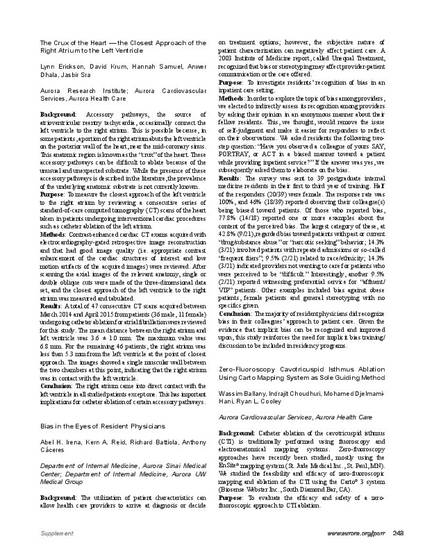
- ablation,
- mapping,
- cavotricuspid isthmus,
- atrial flutter
Background: Catheter ablation of the cavotricuspid isthmus (CTI) is traditionally performed using fluoroscopy and electroanatomical mapping systems. Zero-fluoroscopy approaches have recently been studied, mostly using the EnSite® mapping system (St. Jude Medical Inc., St. Paul, MN). We studied the feasibility and efficacy of zero-fluoroscopic mapping and ablation of the CTI using the Carto® 3 system (Biosense Webster Inc., South Diamond Bar, CA).
Purpose: To evaluate the efficacy and safety of a zero-fluoroscopic approach to CTI ablation.
Methods: We included 9 patients with typical atrial flutter for whom mapping and ablation of the CTI was done using Carto mapping as the sole guiding modality. Zero fluoroscopy was achieved in all of them. Another group of 9 matched patients whose ablations were done using the traditional method (i.e. fluoroscopy and Carto guidance) were included as a control.
Results: Both groups had similar baseline characteristics. The total fluoroscopy time and radiation dose in the control group were 12.8 ± 4.8 minutes, 230.2 ± 131.9 mGy, respectively. The zero-fluoroscopy group were done while wearing no lead aprons. The average total procedure time was 114.8 ± 16.9 minutes in the zero-fluoroscopy group, significantly less than that of the control group (138.6 ± 24.3 minutes; P = 0.0286). The total radiofrequency time was similar in both groups (15.2 ± 7.4 minutes in zero-fluoroscopy group vs 16 ± 2.9 minutes in control group; P = 0.9294). Bidirectional block was achieved in all patients of both groups. No complications were encountered in either group.
Conclusion: To our knowledge, this is the first study of a zero-fluoroscopic approach using the Carto mapping system for ablation of the cavotricuspid isthmus in the United States. The approach is feasible and effective in achieving bidirectional block with less average total procedure time.
Ballany W, Choudhuri I, Djelmami-Hani M, Cooley RL. Zero-fluoroscopy cavotricuspid isthmus ablation using Carto mapping system as sole guiding method. J Patient Cent Res Rev. 2016;3:243-4.
